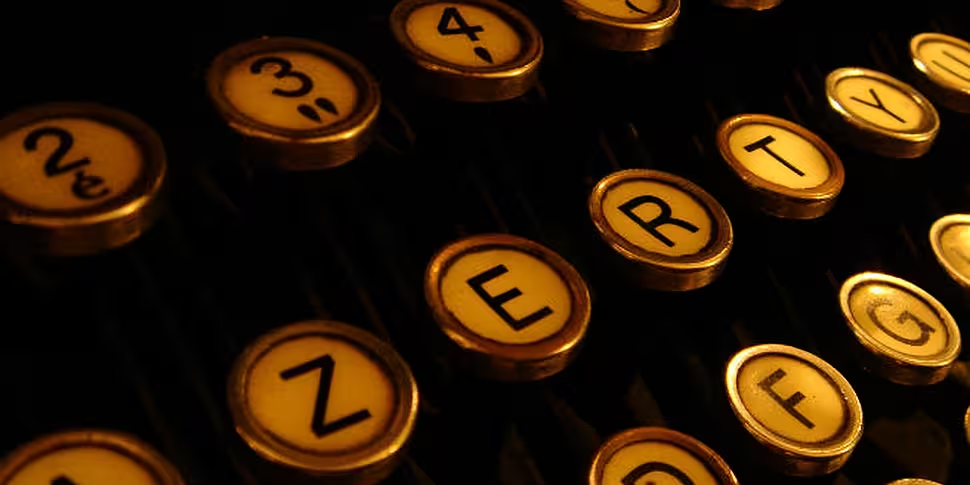Should technology be ever striving to make our lives easier, or is there a joy in learning to master something difficult?
That’s what Seán Moncrieff will be asking today, when he talks to Brian Millar, the head of strategy as Sense Worldwide, an innovation consultancy firm, a man who firmly believes that we should take pride in acquiring skills and mastery of something hard to do and use.
Tune in live to Moncrieff at 2.20pm: www.newstalk.com/player/
When it comes to designing things to be difficult, there is a commonly-held belief that the finger-tapping QWERTY keyboard was arranged deliberately to slow us down. But how much truth is there in that?
The QWERTY design is credited to a politician, printer and newspaper owner by the name of Christopher Latham Sholes, who spent years tinkering away trying to find a solution to making his Milwaukee printing house work more efficiently. Along with other designers, Sholes patented the first ever typewriter in 1868 – with 28 keys of letters and punctuation arranged alphabetically, the assumption being that the order would be the most efficient.
And that, so the theory goes, is where it all started to go wrong.
A quick online search, tapped out on your QWERTY keyboard, will find countless web pages explaining how Sholes had to completely redesign his keyboard due to a mechanical failing of the proto-typewriters. With speedy typists letting their fingers do the talking, the bars on the machines would mesh and clog together. To avoid these jams, Sholes supposedly redesigned the letter placement to separate the most common sequences of letters, like “th” and “he”. And that is seemingly why we’re stuck with a grossly inefficient keyboard still today, despite the lack of mechanical jamming.
But it turns out this myth might just be hogwash.
First and foremost – though perhaps fourth-most is more accurate – a problem with it is found right in the middle of QWERTY: the combination “er” is actually the fourth most-common letter combination in the English language.
In fact, a driving force behind the prevalence of QWERTY might be simple business practices; In the 1870s, Sholes and his business partners signed a deal with the Remington company, which helped the typewriter make its way across the United States. In 1893, Remington merged with the four other largest typewriting companies in the country, forming the Union Typewriter Company. One of its founding principles? To make the QWERTY keyboard the standard across all of its machines.
But why stop there, for it seems Remington was indoctrinating QWERTY acolytes even before the merger. In addition to making the typewriters, the company cottoned on to the fact that it could charge a small fee to businesses to train their typing staff how to actually use the machines. Anyone who learned how to dance across the keyboard inevitably stayed loyal to the brand, and companies that wanted to hire fast typists had to therefore put the QWERTY machines on their desks.
Interestingly, the biggest threat to the survival of QWERTY is actually the thumb; since the proliferation of handheld devices and smartphones has become so commonplace in the modern world, the most valued digit for expression has become the thumb. So the mastery of the classic keyboard has changed, as predictive text improves and takes accuracy out of the algorithmic equations. Designs for new thumb-centred keyboards already exist, and QWERTY’s days as the king of the keyboard might well be numbered.
(Reddit)









